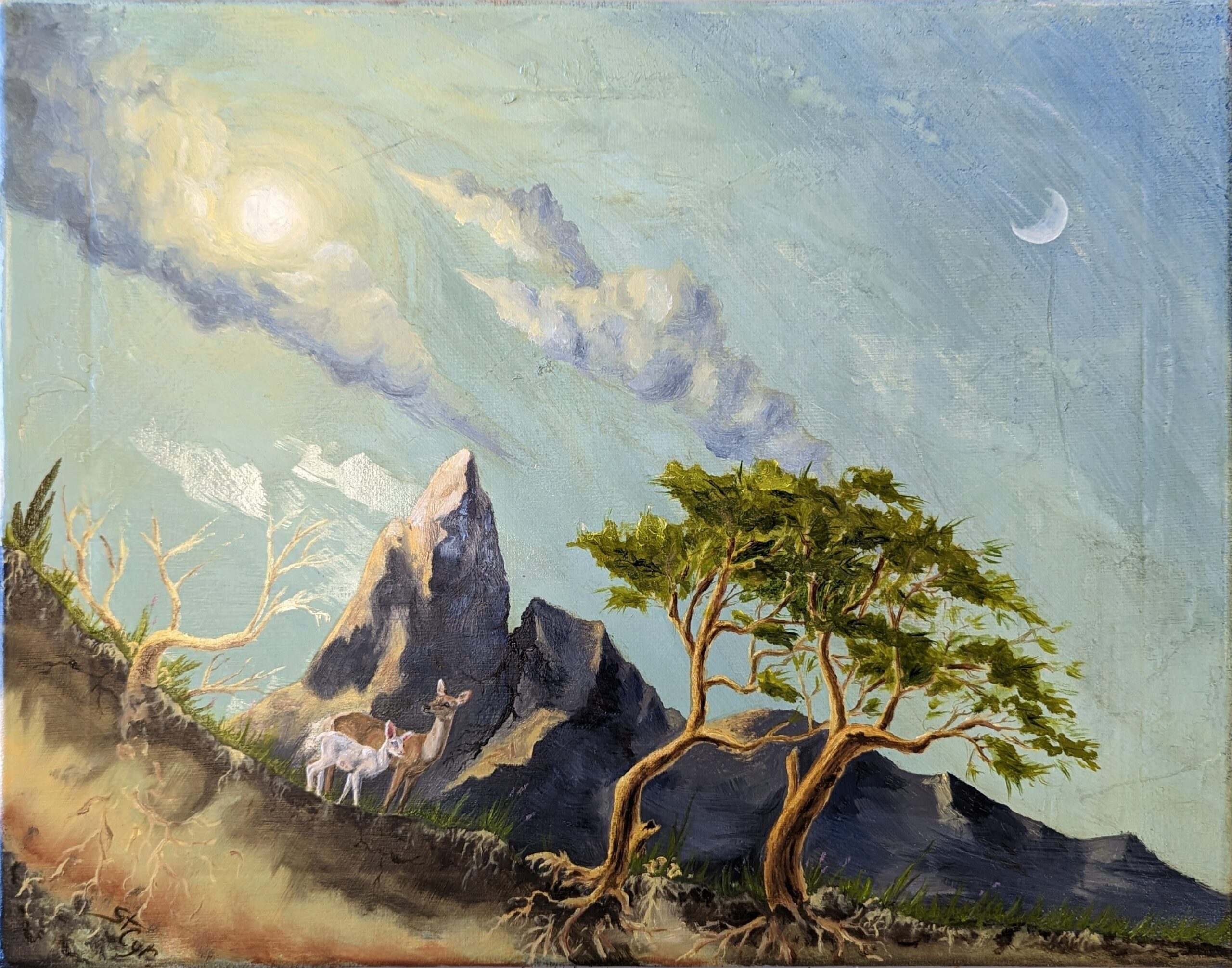Neither the Strongest nor Most Intelligent
Oliver St Cyr
1st Year, Stamps School of Art & Design
1st Year, Stamps School of Art & Design

Medium
Oil on Canvas
Abstract
This work utilises unconventional artistic methods to illustrate how the ecological issue of adaptation to change, can harbour countless parallels to society. Darwin pointed out how species change over time by reacting to environmental stimuli. The painting is intended to be hung crooked, which provides the “environmental stimuli ” which is affecting its residents. Species can be found adapting to change everywhere. But in humans, we undergo similar processes socially. Those who are resistant to change, fall behind, while those who are willing to grow in response to an environmental shift or threat are significantly more likely to survive.
This piece employs a unique hanging method which is unable to be displayed in the images I’ve submitted, but when on display it hangs crooked from the top right corner of the canvas. There is a blue underpainting that contrasts the warm yellow of the trees and sun. You can see some of the soil horizons underneath the subjects because this painting has shifted since it was painted. Where it used to be hanging from an upper midpoint, perfectly level, it has been knocked off balance and the results are seen in the painting. After a while the trees begin to grow back towards the sky, the soil that built up in the bottom corner settles and new vegetation begins to form. However, as the name suggests, this is a discussion of Charles Darwin’s idea that it is the species most adaptable to change that will survive. The mountains in the background are strong, but unyielding. Where the trees may bend to accommodate a drastic change, the mountains crack. The deer in the front provide more context, while the mother appears to be an average deer, she looks back while her unusual offspring looks forward. Not only does this symbolize that youth, of any species, are often more resilient to change as they have not yet been fully molded to their environment, and therefore can still adapt, but also that mutation is often a harbinger of large scale adaptations. However, what we may understand well in ecology, we often fail to relate to society, when the same concepts hold true. This in no way means social darwinism which is nothing but a convolution of Darwin’s original theories. Rather, we can see that resistance to change, stubbornness, can result in cracking like the mountains, while remaining receptive to change can yield new growth, like the trees. And still, youth are generally more receptive to change, while mutations, or non-normative responses to environmental stimuli or conflicts, such as climate change, will usher in a coming widespread adaptation that is necessary to survive. As Octavia Butler said “God is change”. Darwin’s theory of evolution relates not only to finches, but to our very humanity.
